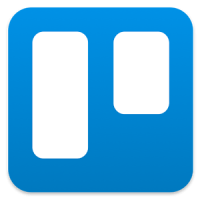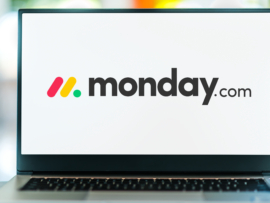There is no doubt that project management solutions help streamline workflows and boost team productivity. However, not everyone needs advanced features. A basic or free version is enough for their needs. In some cases, business leaders or project managers want to try out the free version before upgrading to a paid plan.
This list highlights the best free project management tools for 2023. You will also find information on the benefits and limitations of using free software for project management and our methodology for compiling this list.
Featured partners
Jump to:
- monday work management: Best for scalability
- Asana: Best all-round choice
- Airtable: Best for customization
- Wrike: Best for independent workers
- Trello: Best for simplicity
- ClickUp: Best for small teams
- Smartsheet: Best for spreadsheet collaboration
- MeisterTask: Best for visual task management
- Notion: Best for note-taking
- Teamwork: Best for client work
Top 10 free project management software comparison
This table compares the top free project management tools in terms of relevant features, support and starting price for paid plans.
| Software | Gantt charts | 24/7 customer support | Kanban boards | Mobile app | Starting price (per user) |
|---|---|---|---|---|---|
| monday work management | Yes | Yes | Yes | Yes | $8 per month |
| Asana | Only with paid plans | Yes | Yes | Yes | $10.99 per month |
| Airtable | Only with paid plans | No | Yes | Yes | $10 per month |
| Wrike | Only with paid plans | No | Yes | Yes | $8 per month |
| Trello | Not available | No | Yes | Yes | $5 per month |
| ClickUp | Yes | Yes | Yes | Yes | $7 per month |
| Smartsheet | Yes | Yes | Yes | Yes | $7 per month |
| MeisterTask | Limited (Timeline feature) | Yes | Yes | Yes | $6.50 per month |
| Notion | Limited (Gantt chart template) | No | Yes | Yes | $8 per month |
| Teamwork | Yes | Yes | Yes | Yes | $5.99 per month |
monday work management: Best for scalability

monday work management often features on the best project management software lists, as it offers everything you expect from a top project management solution. The free version of monday work management features all main dashboards, but the number of items you can create is limited. You also get a search function, team collaboration tools, file upload, kanban view and several other features on the free plan. That said, you won’t be able to invite clients or viewers on the free plan, making it ideal for individuals and small teams.
Free and paid plans
- Free: No cost for up to two seats and three boards.
- Basic: $8 per user per month, billed annually, or $10 per user billed monthly.
- Standard: $10 per user per month, billed annually, or $12 per user billed monthly.
- Pro: $16 per user per month, billed annually, or $20 per user billed monthly.
- Enterprise: Contact sales for a custom quote.
Standout features of the free version
- Access to all main boards: In the free plan, you and your team get access to all of the main boards of monday work management. That said, you’re limited to three total boards, and there is a limit to the total number of items you can create.
- Files and forms: In the free plan, you can see all of the files you uploaded in preview or full mode. You can also convert any of the boards into custom forms to collect and track data.
Integrations
monday.com offers more than 200 integrations, including Slack, Microsoft Teams, GitHub, Google Chat, Google Sheets, Zoom, Jira, Tableau, Zendesk and Hubspot.
Pros
- Clean and intuitive interface.
- Highly customizable.
- Access to all main boards.
Cons
- Default notification settings can be annoying.
- Limited views in the free plan.
Why we chose monday work management
We chose monday work management because of how intuitive and adaptable its free version is. The 200+ templates it offers will meet the needs of teams of all sizes, and its kanban boards are easy to set up and follow. The free version also offers up to three boards with up to two members.
For more information, check out our full monday Work OS review.
Asana: Best all-round choice
Asana is a flexible project management and collaboration tool offering multiple views, customization tools, automation and more. Asana’s free plan offers many features, including unlimited storage and team messaging tools. You also get various project views, including calendar, kanban, lists, workload and more. However, the free plan is limited to three project views, no timeline views and fewer admin controls.
Free and paid plans
- Basic: No cost for unlimited tasks, projects, messages, activity logs and file storage.
- Premium: $10.99 per user per month, billed annually, or $13.49 per user billed monthly.
- Business: $24.99 per user per month, billed annually, or $30.49 per user billed monthly.
- Enterprise: Contact sales for a custom quote.
Standout features of the free version
- Unlimited use: What makes Asana’s free plan so outstanding is that you get access to many unlimited features, including activity logs, messaging, file storage and more.
- Agile and scrum support: If your business uses Agile philosophy, you would be glad to know that Asana’s free version supports Agile and scrum.
Integrations
Some of the top integrations in Asana include Microsoft Teams, Splunk, Adobe Creative Cloud, Asana for Salesforce, Tableau, Google Drive and Canva, among many more.
Pros
- Agile and scrum support.
- Unlimited teams and projects in the free plan.
- Multiple project views.
Cons
- You can only assign one task to one team member.
- Limited time tracking.
Why we chose Asana
Even though it can take a while to adapt to Asana’s vast features, Asana is a thorough project management tool that constantly surprises you with the breadth of its feature set. You can use it to manage almost any kind of project. You get unlimited projects, tasks, storage, comments and activity logs in its free version, with List, Board and Calendar views, plus free integrations with everyday apps.
For more information, check out our full Asana review.
Airtable: Best for customization

Airtable is a project management software that evolved from spreadsheets, but over time it has changed its interface to be more modern and streamlined. The excellent free version of Airtable offers a host of features and multiple views, including kanban boards, gallery view and grid view. With the free plan, you get limitations on revision history and file storage.
Free and paid plans
- Free: No cost for up to five users and editors as well as unlimited commenter and read-only users.
- Plus: $10 per user per month, billed annually, or $12 per user billed monthly.
- Pro: $20 per user per month, billed annually, or $24 per user billed monthly.
- Enterprise: Contact sales for a custom quote.
Standout features of the free version
- Airtable apps and add-ons: There is an entire Airtable marketplace with a lot of options to choose from. Of course, only some of the apps and add-ons are available in the free version.
- Add views and commenters: The free plan allows an unlimited number of viewers and commenters in your workspace. You can upgrade this feature in the paid plans if you want the user to have editing capabilities.
Integrations
Though it doesn’t have the most integrations, Airtable has some quality integrations, the most popular being Slack, Google Drive, Salesforce, Jira and Zendesk.
Pros
- Powerful customization capabilities.
- Multiple views.
- Variety of Airtable apps and add-ons.
Cons
- Steep learning curve.
- Permissions for user access are a bit confusing.
Why we chose Airtable
For spreadsheet-style project management, Airtable is highly customizable and has a great, user-friendly interface. You can use this free project management app to create databases without having to write a single line of code. Airtable’s free tier offers unlimited databases and all views except for Gantt and timeline.
For more information, check out our full Airtable review.
Wrike: Best for independent workers

Wrike is an adaptable project management software suitable for all industries. It’s also highly customizable and offers robust collaboration tools. The free plan is ideal for solopreneurs and small businesses. Users get access to kanban boards, tables, spreadsheets and 2GB of storage space. An advantage of Wrike’s free plan is that you can access artificial intelligence features such as AI subtasks creation.
Free and paid plans
- Free: No cost for Board and Table views with limited active tasks.
- Team: $9.80 per user per month for two to 25 users.
- Business: $24.80 per user per month for five to 500 users.
- Enterprise: Contact sales for a custom quote.
- Pinnacle: Contact sales for a custom quote.
Standout features of the free version
- Kanban boards: Users can check the progress of different projects using Wrike’s kanban boards. This feature also allows users to set up or edit the priority of tasks.
- Customized templates: There are prebuilt templates that can be customized for different types of projects, including project scheduling, complex projects and professional service management.
Integrations
With over 400 integrations, Wrike’s integrations include Google Drive, Box, GitHub, Jira, IBM Watson Workspace, Bitbucket and more.
Pros
- Variety of project templates.
- Powerful tools for security.
- Customized reports and dashboards.
Cons
- Initial setup can be difficult.
- Mobile app lacks functionality.
Why we chose Wrike
While Wrike’s features for the free tier are limited, its incorporation of generative AI for rapid content generation for its Work Intelligence solution saves lots of time that would’ve been spent on content, communication and workflows. Aside from the AI project risk prediction feature, all its Work Intelligence features are available in Wrike’s free plan.
For more information, check out our full Wrike review.
Trello: Best for simplicity

Trello is this list’s most easy-to-use free project management software. The interface is based on kanban boards, making it easy to manage and visualize projects.
The free plan includes unlimited cards, lists and up to 10 boards per team. This means that if you need less than 10 boards, you can use the free plan forever. The only major limitation of the free plan is that you only get to upload files that are 10MB or less.
Free and paid plans
- Free: No cost for individuals or small teams.
- Standard: $5 per user per month, billed annually, or $6 per user billed monthly.
- Premium: $10 per user per month, billed annually, or $12.50 per user billed monthly.
- Enterprise: Starts at $17.50 per user per month, depending on the number of users.
Standout features of the free version
- Team collaboration tools: Trello comes with a wide range of communications tools, including document sharing, comments and notifications. Users can configure the notifications according to their preferences.
- Powerful mobile app: Trello’s app is well-designed, allowing users to perform various project management functions through the mobile app with just a few clicks.
Integrations
Trello’s 190+ integrations, which they call Power-Ups, include Slack, Miro, Jira Cloud, Dropbox, Confluence, Salesforce, Microsoft Teams and Zapier.
Pros
- Flexible and customizable.
- Unlimited cards and lists in the free plan.
- Drag-and-drop interface is easy to use.
Cons
- Difficult to track multiple projects at a time.
- Maximum limit of 50 automated command runs per month.
Why we chose Trello
Strictly within the confines of free kanban boards, Trello is arguably the top tool. We chose Trello because of how straightforward and intuitive its kanban boards are. Trello also impresses with its Power-Ups, which are unlimited in the free version, although some may require you to pay.
For a closer look, check out our in-depth comparisons of Trello versus Asana, Wrike, Airtable, ClickUp and monday work management.
ClickUp: Best for small teams

ClickUp is a popular project management tool known for its extensive features. Even the free version of ClickUp is loaded with useful tools for project management. This includes unlimited users, activity views and custom fields. The free plan allows you to create up to five spaces, one for each project flow.
Free and paid plans
- Free: No cost for unlimited free plan members with unlimited tasks.
- Unlimited: $7 per person per month, billed annually, or $10 per user billed monthly.
- Business: $12 per person per month, billed annually, or $19 per user billed monthly.
- Enterprise: Contact sales for a custom quote.
Standout features of the free version
- ClickUp Docs: You can create documents and connect them to workflows. You can also edit and share the documents in real time and set access permission rules for each document.
- ClickUp Goals: With this feature, you can create trackable objectives for each task or project. You can also assign various objectives to a single goal.
Integrations
ClickUp boasts over 1000 tools, with some of the top native ones including ClickUp API, Slack, GitHub, GitLab, HubSpot, Toggl, Harvest, Google Drive, Figma and Microsoft Teams.
Pros
- Unlimited users.
- Easy to create and customize reports.
Cons
- Maximum of 100 uses of custom fields.
- File storage is limited to 100MB.
Why we chose ClickUp
ClickUp is such a multifaceted project management tool, even in its free tier. It offers most views you’d expect from a great project management tool, but aside from the List, Board, Calendar, Table, Doc and Chat views, all the other views have restrictions or are unavailable for free. It is highly customizable and has lots of integrations, and aside from views, you get a taste of workload management, dashboards, reminders, mind maps, whiteboards and custom fields in ClickUp’s free tier.
For more information, check out our full ClickUp review.
Smartsheet: Best for spreadsheet collaboration

Smartsheet merges the functionality of spreadsheets with the capabilities of a solid project management platform. It brings a much-needed approach to managing complex projects using powerful spreadsheets, making it particularly valuable for teams that are comfortable with spreadsheet-style interfaces but need more advanced project management features.
Free and paid plans
- Free: No cost for 1 user and up to 2 editors.
- Pro: $7 per user per month billed annually and $9 per user per month billed monthly.
- Business: $25 per user per month billed annually and $32 per user per month billed monthly.
- Enterprise: Contact sales for a custom quote.
Standout features of the free version
- Two Sheets: The free plan offers two sheets for project tracking and management.
- Multiple Views: Smartsheet’s free tier offers Grid, Gantt, Calendar and Card View to enable teams to view their programs and projects in the formats that matter most to them.
Integrations
Smartsheet offers 90+ integrations across communication, data visualization, content creation, automation and security. They include Slack, Teams, Google Chat, Tableau, Power BI, DocuSign, Adobe Creative Cloud and Zapier.
Pros
- Free version includes all views.
- Unlimited dashboards.
- User-friendly interface.
Cons
- Only one user with up to two editors.
- Free plan lacks support.
Why we chose Smartsheet
Through its unique blend of traditional spreadsheet layouts with modern project management features, Smartsheet simplifies complex workflows and makes it natural to collaborate on projects with a spreadsheet interface. The free version has all the automated workflow features, though automation triggers are limited to 100 per month. Smartsheet also feels easier to use than Airtable, the other spreadsheet-style project management tool on this list.
For more information, check out our full Smartsheet review.
MeisterTask: Best for visual task management

MeisterTask is a visually appealing project management tool that offers a Kanban-style approach to task management. It prides itself on simplicity, intuitiveness and security and is a worthy consideration for teams that find visual workflows and interactive task and project management appealing.
Free and paid plans
- Free: Basic project management features for single users.
- Pro: $6.50 per user per month billed annually and $8 per user per month billed monthly.
- Business: $12 per user per month billed annually and $14.50 per user per month billed monthly.
- Enterprise: Contact sales for a custom quote.
Standout features of the free version
- Collaborative notes: Has up to five notes to allow teams to organize their content.
- Unlimited tasks: The free plan offers unlimited tasks for your team to create as many tasks as they need.
Integrations
MeisterTask offers integrations like Slack, Trello, GitHub, Zapier, MindMeister, MeisterNote, Gmail, Spark, Microsoft Teams and Zendesk.
Pros
- Visually appealing interface that’s easy to navigate.
- Kanban-style boards for effective task management.
- Time tracking integration available.
Cons
- Community customer support.
- No security features in the free version.
Why we chose MeisterTask
There’s something about colorful designs and Kanban boards that just fits. MeisterTask has understood the need to deliver a visually appealing and intuitive interface that makes task management a breeze. With these vibrant Kanban boards, teams can enjoy a more interactive way to manage tasks.
For more information, check out our full MeisterTask review.
Notion: Best for note-taking

Notion is a free project management software tool that excels in note-taking and offers a layout whose customizability proves to be impressive. It is adaptable enough to be used by individuals, small businesses and enterprises across design, engineering, product and management teams. Teams that need a flexible workspace for both project management and documentation must consider Notion.
Free and paid plans
- Free: Collaborative space where it’s possible to invite up to 10 guests.
- Plus: $8 per user per month billed annually and $10 per user per month billed monthly.
- Business: $15 per user per month billed annually and $18 per user per month billed monthly.
- Enterprise: Contact sales for a custom quote.
Standout features of the free version
- Unlimited Blocks: For individual users, the free plan offers unlimited blocks, however, there is a limited block trial for teams.
- Guest Invitations: You can invite up to 10 guests to collaborate, be they friends, contractors, family or clients.
Integrations
A few integrations included in Notion are Jira, Slack, GitHub, Asana, Zapier, Make, Tray.io, Slapdash, Miro, Figma, Google Drive and Webex.
Pros
- Very customizable layout for a tailored workspace.
- Specialized note-taking ability.
- Impressive free plan with almost no restrictions for individual users.
Cons
- Gantt charts are not natively available.
- Limited pages and blocks for teams.
Why we chose Notion
We chose Notion for its unparalleled flexibility and specialized note-taking abilities. The platform allows you to create a workspace that’s as simple or as complex as you need it to be. Its free plan is especially generous for individual users, with tens of templates and almost no restrictions on blocks and basic integrations.
For more information, check out our full Notion review.
Teamwork: Best for client work and invoicing

Teamwork is a free project management tool that is particularly well-suited for client work, which often involves marketing teams, creative teams, agencies, consultancies and more. It has a lot of features, ranging from customizable templates to milestone tracking, which makes it adaptable for many different types of projects.
Free and paid plans
- Free Forever: Free for up to 5 users per plan.
- Starter: $5.99 per user per month billed annually and $8.99 per user per month billed monthly.
- Deliver: $9.99 per user per month billed annually and $13.99 per user per month billed monthly.
- Grow: $19.99 per user per month billed annually and $25.99 per user per month billed monthly.
- Scale: Contact sales for a custom quote
Standout features of the free version
- Milestones: You can add milestones to task lists to track progress in the free version.
- Client work essentials: Though some may be limited, Teamwork has most of the core project management features for client work, such as full time tracking, in its free plan.
Integrations
Teamwork integrates with many tools, which include HubSpot, Slack, Microsoft Teams, Skyvia, Atarim, Stripe, Integrately and more.
Pros
- Versatile tool well-suited for client work.
- Offers unlimited tasklist templates.
- Has time tracking and timesheets features in its free plan.
Cons
- Limited reporting features in the free plan.
- The free plan’s customization is limited to color themes.
Why we chose Teamwork
We chose Teamwork for its versatility. The platform offers a range of features that are particularly useful for agencies, consultancies and other client-focused teams. Its milestone tracking makes it easy to manage projects from start to finish, while its invoicing features make it seamless to export invoices based on logged billable hours from Teamwork to accounting software.
For more information, check out our full Teamwork review.
What are the benefits of free project management software?
The most significant benefit of free project management software is that you get to try the software without having to pay anything. The best project management software offers a variety of features in the free version, so for some businesses or users, the free plan will be all they need for their project management.
In addition, the free version provides a feel for the user interface and overall functionality of the software, so if you want to upgrade, you have a good idea of what to expect from the software.
What are the limitations of free project management software?
The limitation of free project management software is specific to each solution. Some of the more common limitations may include:
- Most free project management app versions don’t offer integration capabilities with third-party applications.
- There are sometimes limits on the number of projects, users, file storage, activity log and other parameters.
- In most cases, there is a limit to the number of project views, reporting and analytics and other advanced features.
How to choose free project management software
When choosing the best free project management software for your needs, you must decide which features are most important. For example, if you need software with 24/7 customer support or Gantt charts, you must shortlist vendors offering those features.
Once you have shortlisted a few solutions based on specifications, you need to dig deeper through expert reviews and customer ratings. You should also test out the software to make an informed decision if it is the right fit for your needs.
Review methodology
We used the software’s features, pricing, customer support, usability and other criteria to compile the best free project management software list. Each software’s popularity, user ratings, expert reviews and hands-on experience were evaluated.
The evaluation was focused on the features offered in the free version of each software. This includes features such as file sharing, project views, collaboration tools and mobile app.










